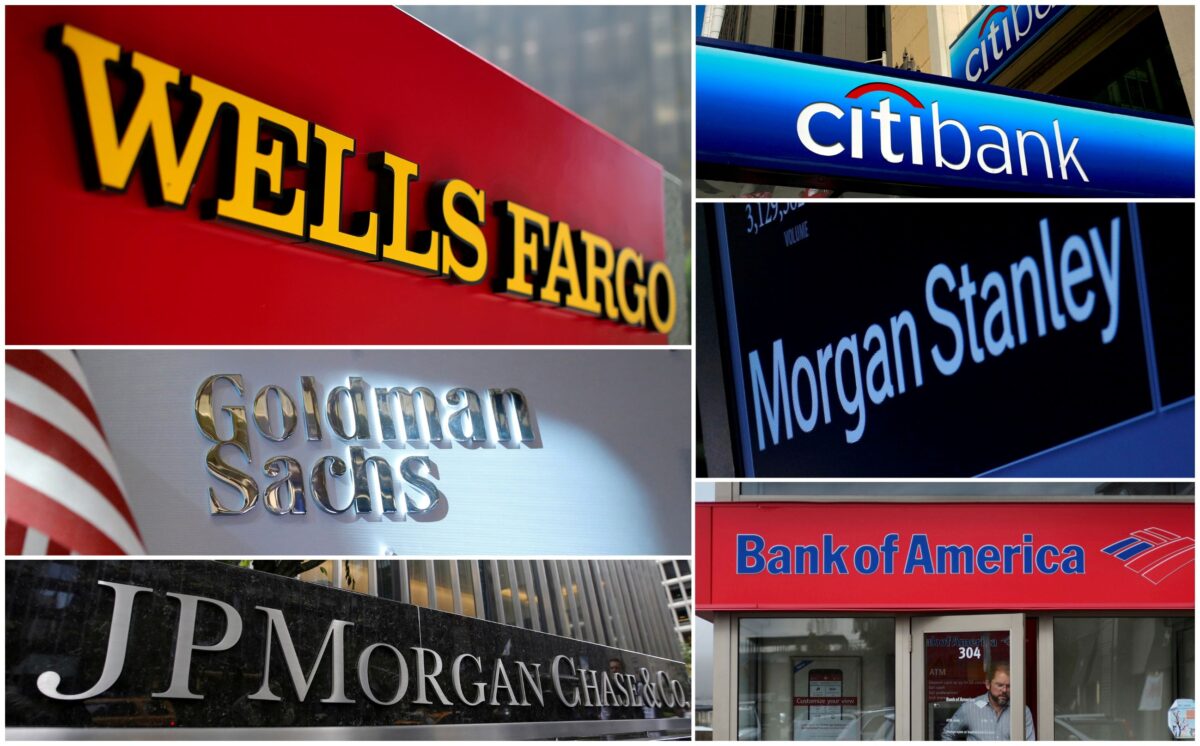
The major American banks will be facing the Federal Reserve’s annual stress tests this week, to see if they have enough capital in a potential crisis to make the grade.
Despite the recent bank crisis this year, the lenders are are believed to have enough capital to weather a severe economic downturn., say analysts, but investor payouts are expected to dip slightly.
Major Wall Street institutions like Citigroup, Bank of America, JPMorgan Chase, Goldman Sachs Group, Wells Fargo, and Morgan Stanley are all in the spotlight.
However, smaller lenders including Capital One, U.S. Bancorp, and Citizens Bank, are also receiving attention from worried investors.
The Fed established the tests following the 2007-2009 financial crisis as a way to assess if the banks could withstand a similar shock in a future crisis.
The stress tests were instituted in 2011, with large lenders initially struggling to earn passing grades. But they have adapted to them since, while the Fed has made the tests more transparent to the public.
The central bank also scrapped the original “pass-fail” model and introduced more bank-specific capital requirements.
Results are In
On June 28, the Fed will release the results of its checks on the industry’s steadiness to see if the results could assist with lenders’ capital planning and dictate how much liquidity they can return to shareholders via dividends and share buybacks.
Meanwhile, the Fed has faced criticism after regional bank failures this spring and for not being thorough enough to check on industry weaknesses regarding the effects of borrowing rate hikes.
This year’s tests come after the recent banking crisis, which caused four U.S. regional lenders to fail in the first quarter of 2023, along with the forced acquisition of Credit Suisse by UBS.
The local lenders responded poorly to the Fed’s aggressive interest rate policy and saw large unrealized losses on their U.S. Treasury bond holdings, which caused uninsured depositors to go on a bank run, leading to their collapse.
The exam will be tougher this year, but bank analysts and executives expect the 23 lenders under review to have capital in excess of the regulatory minimums.
In 2022, 34 banks were assessed. The Fed in 2019 allowed banks with between $100 billion and $250 billion in assets to be tested every other year.
“The 2023 Fed Stress Test throws the kitchen sink at banks and allows them to show that the largest banks can handle one of the toughest tests yet,” Wells Fargo analysts wrote on June 22.
“Dividends should be secure, and banks should have excess capital to return to shareholders under most circumstances, even if at a slower pace than in the past.”
In 2022, the Fed found that banks would suffer a combined $612 billion in losses during a severe economic downturn, but that would still leave them roughly twice the amount of capital required under current rules.
Lender Stress Test to See Improvements
This year, the Fed’s “severely adverse” scenario envisages the unemployment rate jumping 6.5 percentage points, compared with 5.8 percentage points in 2022.
The final results in the scenario were due to the bank stress test being made more difficult than the figures in the real economy, with the actual unemployment rate being lower compared to the same time last year.
The stress test will also have a scenario featuring a 40 percent decline in commercial real estate prices, which is now an area of major concern, as thousands of offices still remain vacant due to remote work policies, worrying many landlords and borrowers.
The test will assess whether banks would stay above the required 4.5 percent minimum capital ratio during the hypothetical downturn. The nation’s largest international banks also must hold an additional “G-SIB surcharge” of at least 1 percent.
Meanwhile, the strength of a bank’s “stress capital buffer”—a cushion of liquidity on top of the 4.5 percent minimum that the Fed requires for banks hold to weather a hypothetical economic downturn and the regulatory minimums required to support daily operations—is the primary factor in dictating an institution’s performance.
The test last year was relatively simple since the central bank did not have a vice chair for supervision after Randal Quarles stepped down in 2021.
Quarles’ successor, Michael Barr, who was appointed to the Fed this year, will make the exams more dynamic by applying multiple stress scenarios.
“In an environment of ever-changing risks, stress tests can quickly lose their relevance if their assumptions and scenarios remain static,” Barr said in December.
The improved test will now include an “exploratory market shock” for the eight largest and most complex banks.
Although the trials will not affect capital, they will be used to assess potential multiple scenarios in future stress test exercises.
Banking Losses Expected Due to Commercial Real Estate Market
Still, the major players in the industry have performed well in recent years, despite the recent failures.
The Bank Policy Institute announced on June 22 that it anticipates banks’ hypothetical losses in the tests to be slightly higher in 2023.
Average capital levels are expected fall by 3.2 percent in the test this year, up slightly from 3 percent in 2022, it predicted.
Economists at RBC predicted in early June that hypothetical credit losses will be largely driven by the decline in commercial real estate, and that some banks would face higher buffers.
The real estate crisis, combined with expected interest rate hikes later this year and economic uncertainty, are making banks slightly more conservative about capital returns this year, said analysts at Jeffreys.
Reuters contributed to this report.


















































